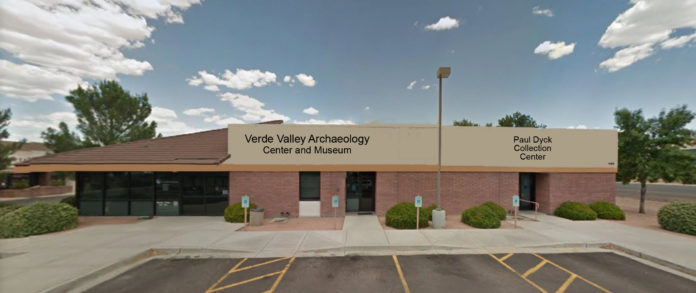The Verde Valley Archaeological Center has outgrown its home on Main Street in Camp Verde and will expand, though less ambitiously than planned.
For several years, the organization has been seeking to move to a new home on land it owns on Homestead Parkway close to State Route 260, where it already has a heritage trail showcasing ancient pit houses and artifacts from the area.
However, the VVAC announced last week that instead of building a new museum on the land it owns, it intends to purchase the former Verde Valley Medical Center clinic building at 460 Finnie Flat Road, in Camp Verde, which it will then repurpose into a new museum, albeit one slightly less ambitious than the planned Homestead Parkway complex.
“It’s vacant, it’s available, and it’s half the price of what it would have been to build the building,” VVAC Director Ken Zoll said. “Minimal renovations, plenty of space — the building has been up for 20 years so it’s settled. It’s brick. We’ve had it inspected. It’s solid as a rock. It’ll last us minimum another 10 to 15 years if not forever.”
The previous plan for the VVAC was to apply for a loan from the U.S. Department of Agriculture in order to design and build a state-of-the art museum space that could show off its extensive collection of artifacts alongside new modern exhibits. However, the pandemic has not only slowed down the grant process at the USDA, but taken a bit out of the museum’s future profitability, with no one sure when it will be safe to return in large numbers to museums.
“One of the realities of the pandemic was that museums across the country were forced to close for six to nine months,” VVAC wrote in a press release. “If any have reopened, it has been on a very limited and restricted basis. Since museum admission was anticipated to be a major source of funding to repay the loan, the USDA hesitated to provide the full funding requested by the VVAC. The VVAC board of directors came to a similar realization and began to look for a less costly alternative.”
While not as large as the proposed building, the old VVMC building would mean a significant increase in space for the VVAC, moving from roughly 3,300 square feet in its current home to almost 11,000. According to Zoll, this extra space is especially helpful in housing future collections, including a collection of local artifacts that the VVAC is hoping to acquire this summer.
“If we had our space up and running say by October, we could accept these collections, and it would generate a substantial amount of revenue,” Zoll said.
The current timeline for the purchase and construction would allow for that, with an anticipated closing in spring. Since minimal renovations are necessary for the new building to be usable as a museum, Zoll hopes that the VVAC can meet that timeline to open in the fall.
The VVAC intends to pay for this new purchase with a combination of selling some of its land by Homestead Parkway — while retaining the land with the heritage trail and the potential site of a future museum, if the VVAC is able to later follow through with its original plans — for $600,000, while bringing in $600,000 in grants.
The largest of those grants comes in the form of $500,000 from the Paul Dyck Foundation Research Institution of American Indian Culture, which has partnered with the VVAC for years.
“The Paul Dyck Foundation feels it is very important to continue with my father’s goal of public education through museums,” John Dyck, son of the foundation’s namesake, wrote in an email. “The opportunity to have our collection which had been excavated in the 1960s from his ranch in Rimrock, Arizona housed in a local museum was very appealing. We feel our foundation has made the right choice with the VVAC. The VVAC’s dedication and commitment to this collection and all others in its care has been impressive.”
“The VVAC is at the point where it needs a larger facility to house the collections already in its care and also be able to accept other collections. Our grant will help them reach that goal and we plan to continue our support of the VVAC in the future as well.”



